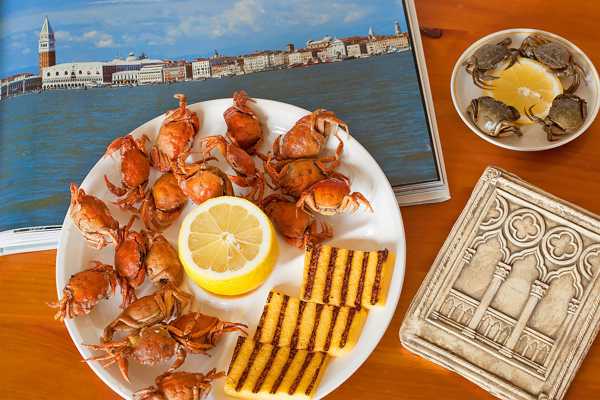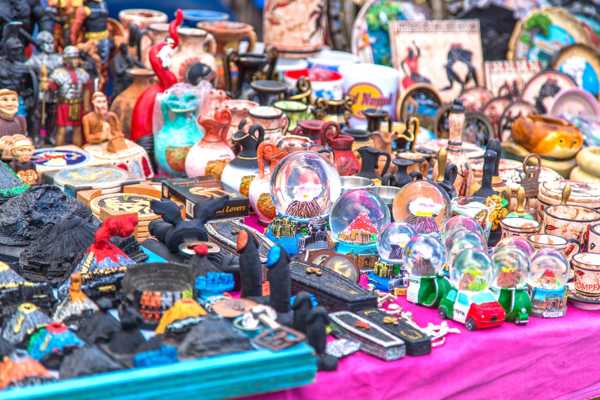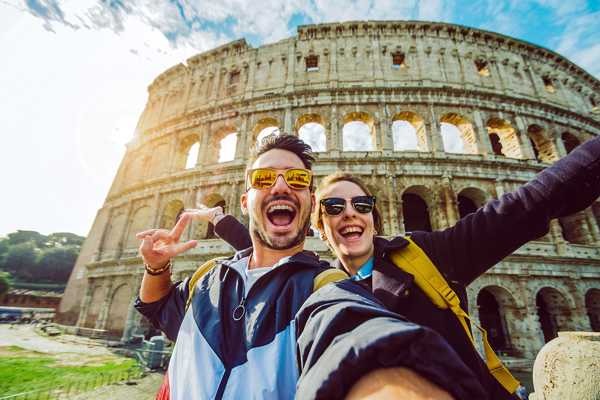Emilia-Romagna is known for its warm and welcoming inhabitants, its culinary tradition that's rich in delicious specialities, and its numerous medieval villages that are scattered across the land. From north to south, east to west, the region is dotted with towers and fortresses, castles and noble residences, ancient churches and monasteries, all standing proud in the town centres which in turn are enveloped by untouched natural surroundings.
What could be better than getting lost in the dreamlike narrow streets that wind their way to the fortresses while looking for the perfect, one-of-a-kind selfie backdrop? Come with us and discover 11 villages in Emilia-Romagna that are lost in time.
- 1
Bobbio
Discover the history and legend behind the Devil's Bridge

- Budget
- Par
- Familjer
- Historia
- Fotografering
In Bobbio, the beauty of Emilia merges with magical medieval legends. It stands against the scenic backdrop of Val Trebbia (Trebbia Valley), bordering Liguria. Dating back to the early Middle Ages, Bobbio conceals traces of Irish monk Saint Columbanus. Ponte Gobbo (Humpback Bridge), so-called for its uneven shape, is now a symbol of the town.
Saint Columbanus supposedly convinced the devil to build the bridge one night in exchange for a soul, but tricked him and saved the soul. While we can't be sure if that story's true, there’s no doubt that the monastery of the same name, together with the Cattedrale di Santa Maria Assunta (Cathedral of Saint Mary of the Assumption) are some of Bobbio's most popular sites.
Adress: 29022 Bobbio, Italy
Karta - 2
Castell'Arquato
Admire an imposing fortified castle where the past lives on

- Budget
- Par
- Familjer
- Historia
- Fotografering
Castell'Arquato, in the province of Piacenza, is an indelible example of a medieval town. It stands proudly on the top of a hill in Val d'Arda, featuring ancient houses and dominated by the magnificent Rocca Viscontea (Visconti Castle).
Characterised by an attractive crenelated wall and defensive towers, the fortified complex is one of the most notable military constructions in the area. As well as the fortress, the town's home to Palazzo del Podestà (Podestà Palace), open during exhibitions and cultural events, and the Romanesque Collegiata di Santa Maria (Collegiate Church of Santa Maria), which houses frescoes from different eras.
Adress: 29014 Castell'Arquato, Italy
Karta - 3
Brisighella
Get to know a small town with a rich food and wine tradition

- Budget
- Par
- Familjer
- Mat
- Historia
- Fotografering
Brisighella: a town with three personalities. Its three main attractions are its rich history, marvellous landscape and vibrant culinary scene. What's more, its main points of interest stand on three hills: Santuario del Monticino (Sanctuary of Monticino), Rocca Manfrediana (Manfrediana Castle) and Torre dell'Orologio (Clock Tower).
Surrounded by the unique scenery of the Parco Regionale della Vena del Gesso Romagnola (Vena del Gesso Romagnola Regional Park), the historic centre’s alleys and streets offer strikingly beautiful views amongst their nooks and crannies. An unforgettable experience also awaits you at mealtimes. Make sure you try the excellent olio extravergine d'oliva DOP Brisighella (Brisighella DOP Extra Virgin Olive Oil), carciofo Moretto (Moretto artichoke) and vino Sangiovese DOC (DOC Sangiovese wine).
Adress: 48013 Brisighella, Italy
Karta - 4
Dozza
See how old houses are brought to life with colourful murals

- Budget
- Par
- Familjer
- Historia
- Fotografering
Dozza, near Bologna, is a small town with an open-air contemporary art gallery and other attractions. Like many other nearby towns, it dates to the Middle Ages and is dominated by a castle, Rocca Malvezzi-Campeggi (Malvezzi-Campeggi Castle). But what makes it unique are the paintings that have given its houses a new lease of life.
The large and dazzlingly colourful murals are the result of the Biennale del Muro Dipinto (Biennial Exhibition of the Painted Wall). The event has taken place every other year since the 1960s, and involves artists from all over Italy who come to Dozza to unleash their creativity. It's definitely something you should experience at least once in your life.
Adress: 40060 Dozza, Italy
Karta - 5
San Leo
Reach the fortified town on a rocky spur

- Budget
- Par
- Familjer
- Historia
- Fotografering
San Leo is a fairy-tale village with a large fortress on a rocky spur that can be seen from afar. Located in the heart of Val Marecchia (Marecchia Valley), in the province of Rimini, it's also connected to two legendary figures. One is Saint Leon, the town's founder and patron, in whose honour the town changed its original name to from Montefeltro.
The other is the Count of Cagliostro, an alchemist who was imprisoned in the fortress for heresy. These events have given the town its mysterious, spiritual vibe, which continues to permeate its quiet, ancient streets. Don't miss the atmospheric Pieve di Santa Maria Assunta (Parish church of Santa Maria Assunta) and its original 9th-century layout.
Adress: 47865 San Leo, Italy
Karta - 6
Fontanellato
Navigate a bamboo labyrinth and a moated castle

- Budget
- Par
- Familjer
- Historia
- Fotografering
The origins of Fontanellato, a quiet town in the province of Parma, are intertwined with history. Its name ('extended spring') echoes features of the local landscape, more specifically the natural reserves in Bassa Parmense, also known as fonatinili. The town's known for its enchanting Rocca Sanvitale (Sanvitale Castle), surrounded by a deep water-filled moat, and for the Labirinto della Masone (Masone Labyrinth), the largest bamboo maze in the world.
The castle rooms are decorated with frescoes by Parmigianino, and hold paintings, furnishings and items from previous centuries. The labyrinth is shaped like a star and includes a complex of buildings featuring Neoclassical elements. Exhibitions, conferences and other cultural events regularly take place here.
Adress: 43012 Fontanellato, Italy
Karta - 7
Gualtieri
Drop by the adopted hometown of naïf painter Ligabue

- Budget
- Par
- Familjer
- Historia
- Fotografering
Gualtieri stands gracefully on a bend of the Po, located at the centre of the Pianura Padana (Po Valley), an area interspersed with land and water. The urban layout of the town is thanks to the Bentivoglio family. It's a real masterpiece, especially Piazza Bentivoglio, which is deemed by art historians to be one of the most beautiful in Italy.
A perfect square shape, it's made up of buildings with porticos on three sides, with the fourth overlooking Palazzo Bentivoglio (Bentivoglio Palace), home to the Fondazione Museo Antonio Ligabue (Antonio Ligabue Museum Foundation). The famous naïf painter lived in Gualtieri for much of his life and created his most significant works here.
Adress: 42044 Gualtieri, Italy
Karta - 8
Busseto
“Fly, Thought, on Golden Wings...”

- Budget
- Par
- Familjer
- Historia
- Fotografering
Busseto’s another small town in Emilia-Romagna whose history intertwines with the destiny of a great artist. Located in Bassa Parmense, it’s the birthplace of composer Giuseppe Verdi. This must-see spot for classical music fans includes several sites connected to the great Maestro, from the Roncole district, home to Casa Natale di Giuseppe Verdi (Birthplace of Giuseppe Verdi), to Museo Casa Barezzi (Casa Barezzi Museum), in the historic home of the composer.
Don't skip the rest of the town, like the renowned Collegiata di San Bartolomeo Apostolo (Collegiate Church of San Bartolomeo Apostolo), built in Gothic and Rococo style, and Chiesa di Santa Maria degli Angeli (Church of Santa Maria degli Angeli), housing a famous 15th-century terracotta sculptural ensemble by Mazzoni.
Adress: 43011 Busseto, Italy
Karta - 9
Verucchio
Witness the power of time intertwining with spiritual traditions

- Budget
- Par
- Familjer
- Historia
- Fotografering
Verucchio is a small town on a rocky spur, dominating the green Valmarecchia valley. The Malatesta family's immense power originated in the Rocca Malatestiana (Malatesta Castle), which stands in the upper part of the town.
This noble family was one of the most important and influential in medieval times. Nowadays the fortified complex is open to tourists, and offers a breathtaking view from the Apennines to the sea by Rimini. Another site worth visiting is the Convento Santa Croce - Ordine dei Frati Minor (Monastery of the Santa Croce - Order of Friars Minor), featuring a cloister with a centuries-old cypress tree. According to popular belief, it was planted by Saint Francis himself in the 13th century.
Adress: 47826 Verucchio, Italy
Karta - 10
Montegridolfo
Walk the borderland that's seen clashes of opposing powers

- Budget
- Par
- Familjer
- Mat
- Historia
- Fotografering
Montegridolfo has always had the spirit of a borderland, due to its location between Emilia-Romagna and Marche. Once the object of power struggles between Montefeltro and Malatesta, it became known as a battlefield in WWII due to the fact that the infamous Gothic Line passed nearby. In the Museo della Linea dei Goti di Montegridolfo (Montegridolfo Gothic Line Museum), you can retrace this dramatic chapter of recent history and observe finds, weapons and propaganda material from both sides.
Despite the conflict, the town still features its medieval layout with high walls, towers and ancient churches housing valuable works. Montegridolfo is also known for its olive oil production, a tradition that stretches back over a thousand years.
Adress: 47837 Montegridolfo, Italy
Karta - 11
Vigoleno
Stroll through a fortified village in Piacenza

- Budget
- Par
- Familjer
- Mat
- Historia
- Fotografering
Vigoleno is a village that has stood the test of time. Its majestic, crenelated walls, keep with arrow loops and battlements, and the inner courtyards of its castle make it a dream wedding venue. Even if you don't have a big day on the horizon, Vigoleno is definitely still worth visiting. You'll feel like you've been transported to when the castle was inhabited by dames and knights.
Other buildings have also been perfectly preserved, including Pieve di San Giorgio (Parish Church of San Giorgio), a splendid Romanesque church in the centre of the village. If all that exploring’s made you hungry, head to a local restaurant and try some pisarei e faśö, Piacenza gnocchi in a sauce of beans, lard, onions and tomato.
Adress: 29010 Vigoleno, Italy
Karta


















